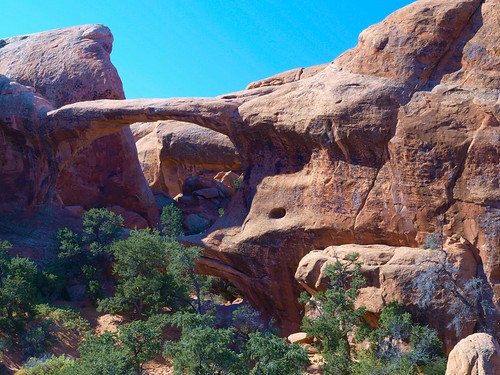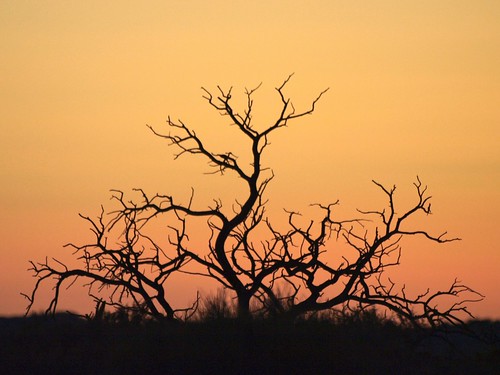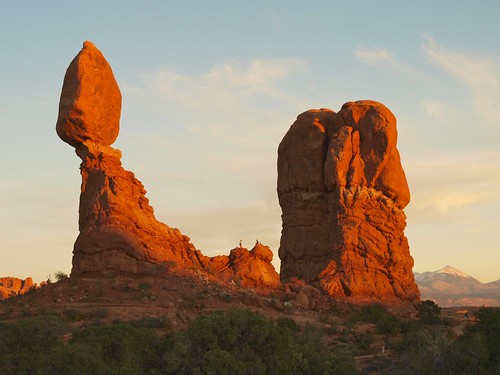Double O Arch is the second largest arch in the Devil’s Garden area of Arches National Park. (Landscape Arch is the largest.) There are actually two arches here – the smaller arch spans 21 feet and the larger one has a span of 71 feet. They are both a part of the same sandstone fin. The path to this arch is considered primitive (ha!) and is nearly a two mile hike from the Devil’s Garden Trailhead and parking lot. If you are a movie aficionado, you may recognize these rock formations from Indiana Jones and the Last Crusade.
Although geologists do not recognize the classification of a rock window, popular names often attribute window-like features to openings in the rocks. This opening, Top Story Window, is in the southern part of Devil’s Garden.














